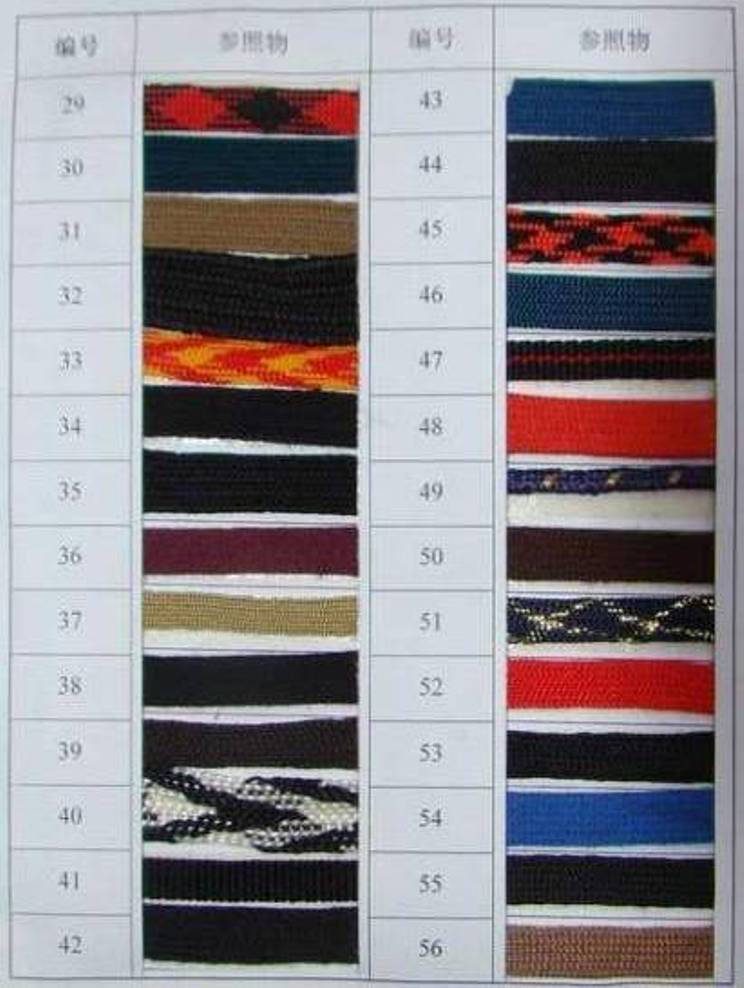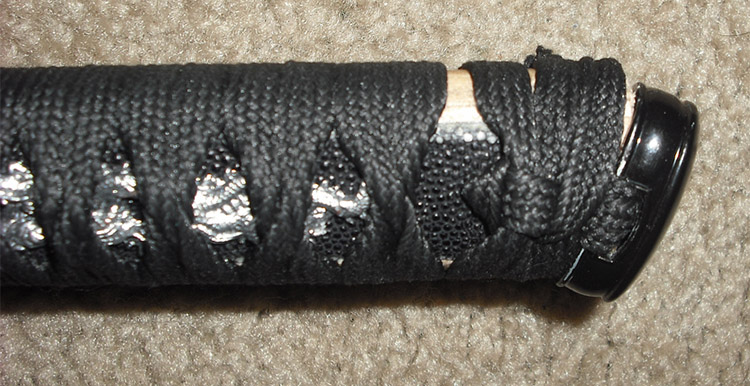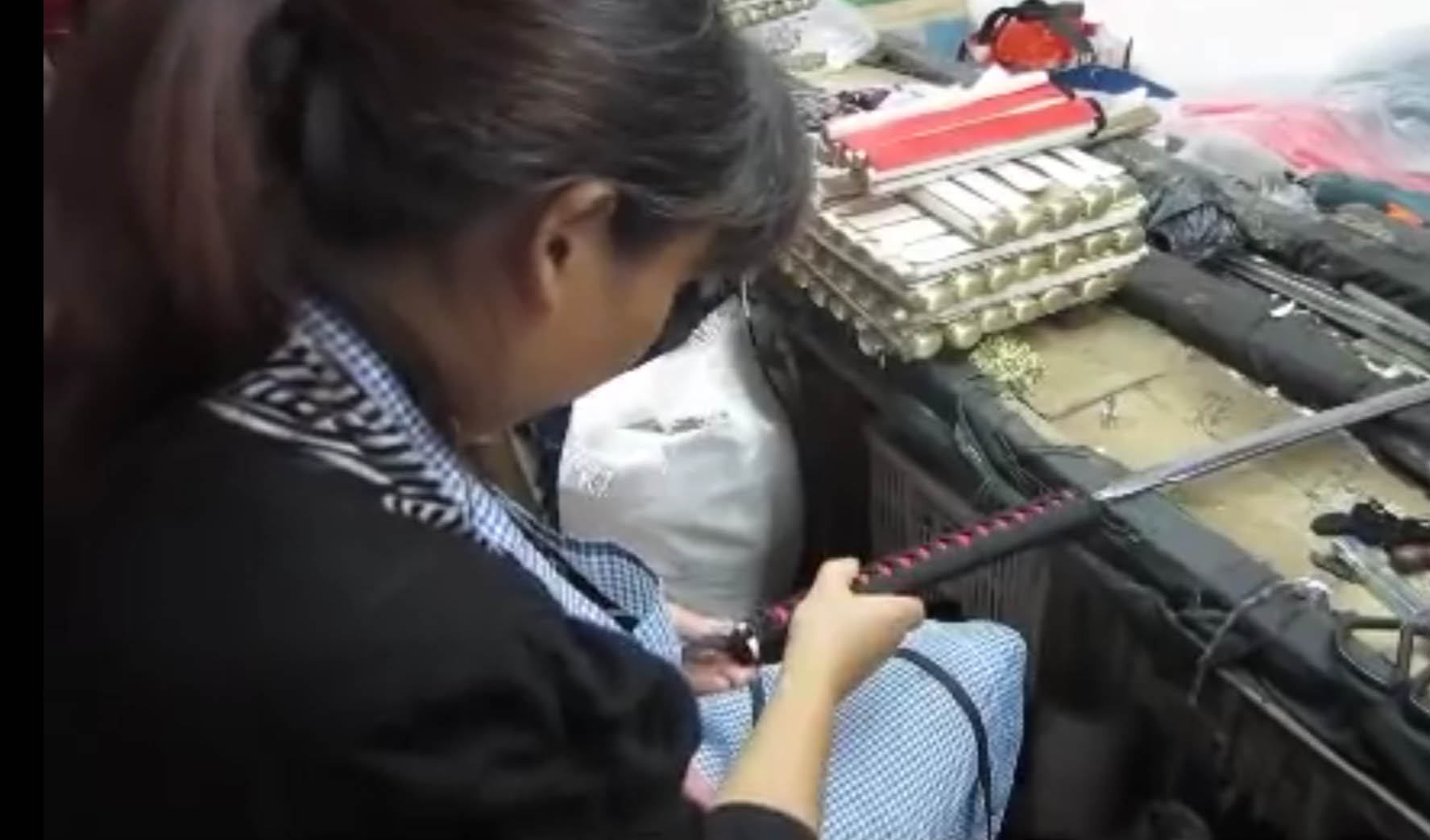Recent Articles
-
Christmas Sword Buying Guide 2025
Dec 03, 25 10:53 PM
Ito

Ito (the Japanese word for 'thread'), sometimes called tsukaito (handle thread) or tsukamaki or itomaki designates the wrap used on a Japanese swords handle.
There are quite a few different styles and techniques for wrapping a handle - the best using what is called Hishigami squares to create perfectly shaped diamond patterns (which is, as you might expect, time consuming and expensive to do on a production sword).
Click here to learn how to do your own tsukamaki
What Ito is Made from, How Much it Costs and Common Problems
WHAT IT IS MADE FROM: Ito is made from, in ascending order of tensile strength, cotton, suede, leather, rayon or silk and comes in a wide variety of styles and colors.
 A chart showing just some of the colors and styles available
A chart showing just some of the colors and styles availableHOW MUCH IT COSTS: The cost varies depending on the material used and the base quality of said material. Entry level materials are quite inexpensive, with most of the cost reflecting the labor involved to tie it - imported premium materials around $4 a foot.
The way to determine how much material is needed is to take the base length of the tsuka handle in inches, add two, and turn the measurement from inches to feet. For example, with a standard 11" tsuka handle, 13' of material is usually required - costing approximately $50 or so.
The cost to have someone else wrap the handle is typically between $250 to $500.
COMMON PROBLEMS: Probably the most common issue with a Katana's handle wrap is the wrap arriving or coming loose with usage.

There are a whole host of reasons why this may occur, from the use of inferior, stretchy materials to an overly rushed job when wrapping it (which is necessary to keep costs down, as the cost of wrapping it in the traditional way is usually more than the cost of an ENTIRE entry level production sword).
 One of the workers in China who wraps the handles. She works fast, and she needs to to keep costs down.
One of the workers in China who wraps the handles. She works fast, and she needs to to keep costs down.Short of re-wrapping the entire handle yourself or having it sent away to professionals (such as to the Fred Lohman Company here) the entire handle assembly can be addressed by coating it in lacquer - several coats of varathane or polyurethane, thinned down and applied with a brush and worked into the hilt assembly with the hands, can provide a super tight finish to a loose ito tsuka.
For more information on how to do this, see the following video.
WARNING: Video may contain some offensive language
I hope this information on ito has been helpful. To return to Samurai Sword Terminology from Ito, click here

Buying Swords Online Can Be DANGEROUS!
Find the Best Swords in the:
Popular & Recommended ARTICLES

The ONLY true free online magazine for sword enthusiasts. Delivered once a month on the 1st day of the month, no filler and no BS, just the latest sword news & info delivered straight to your inbox.












